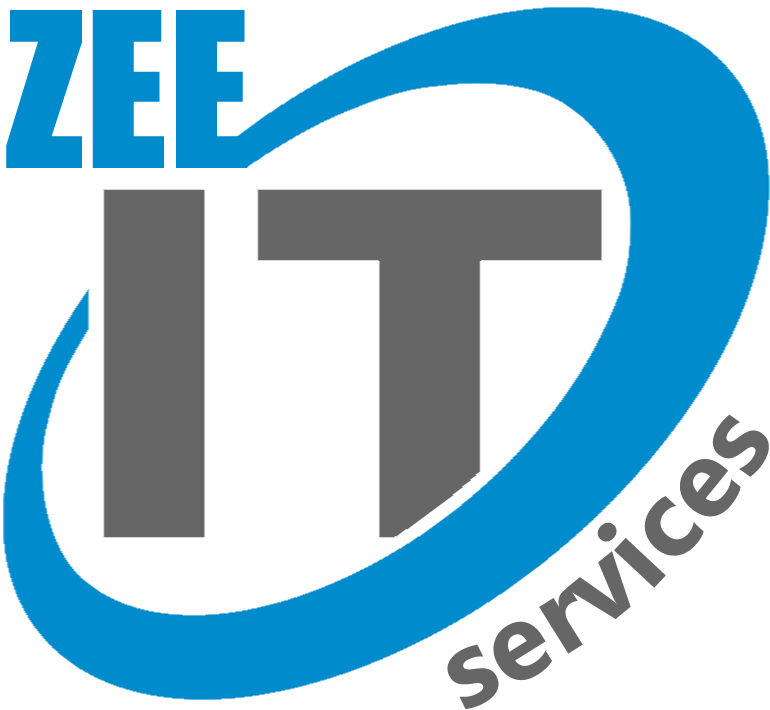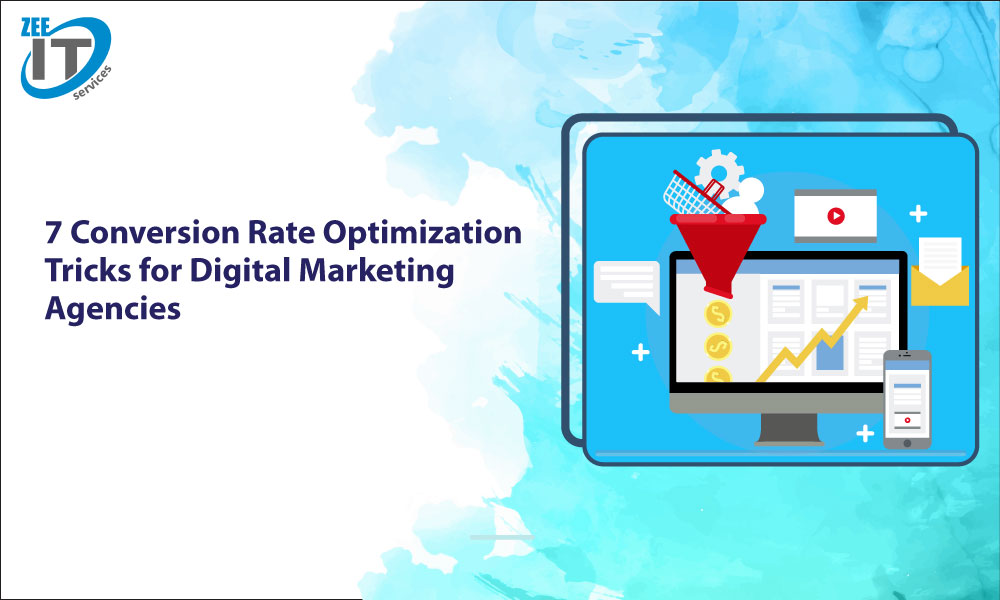When we first talk about SEO the first thing that we have in our mind is driving organic traffic but now the focus is diverted from driving traffic that is more likely to convert into qualified website leads and sales. It is now essential for a website to maximize each visitor’s efficiency in order to achieve sustained development and success. That’s where CRO comes into place. More of the companies emphasize conversion rate optimization and are investing up to $2,000 a month in CRO resources. So it’s essential to understand CRO optimization. There are some tricks for digital marketing agencies that are necessary to understand and may be committed to memory. So let’s get started!
What is conversion rate optimization?
Before going further let’s first see what conversion rate optimization is. The process of fine-tuning different aspects of your digital marketing plan to encourage visitors to do a desired action—such as buying something, completing a form, or signing up for a newsletter—is known as conversion rate optimization. You can maximize the value of your current traffic by increasing your conversion rates, which will increase your return on investment (ROI) and maximize revenue. The main goal of CRO is to engage users to buy anything, place something in a shopping cart, register for a newsletter, Get a free trial registered, and Get an ebook downloaded.
A survey found that employing CRO tools generates an average ROI of 223%. To get the conversion rate, divide the total number of conversions by the total number of visits. Then, multiply the result by 100 to obtain the percentage.
What is the difference between CRO and CTR?
Conversion Rate Optimization (CRO) and Click-Through Rate (CTR) are two crucial metrics in digital marketing, each serving distinct purposes. CRO focuses on enhancing the efficiency of a website by maximizing the percentage of visitors who take desired actions, such as making a purchase or filling out a form. It involves optimizing various elements of the website and user experience to guide visitors toward conversion, often through practices like A/B testing and continuous iteration.
On the other hand, CTR measures the effectiveness of specific ads or links in driving traffic to a destination, such as a website or landing page. It indicates how well an ad resonates with the audience and prompts clicks, serving as a performance indicator for online advertising campaigns. While CRO aims to optimize the conversion process, CTR evaluates the immediate impact of ads and links in generating clicks. Both metrics are essential for assessing the effectiveness of digital marketing efforts, but they address different stages of the customer journey and require distinct optimization strategies.
7 conversion rate optimization tricks:
Now let’s discuss the 7 strategies for conversion rate optimization.
Do thorough and extensive research:
Extensive and comprehensive research is the first step and is said to be the foundation of effective digital marketing strategy. During this phase, strategies are developed that need to be very relevant to your target audience and in line with the company’s goals.
Examining your objectives, USPs (unique selling points), and customer queries are all part of this. Your efforts to align your sales presentation with the expectations of your consumers can be significantly helped by clearly stating your objectives and outlining your USPs.
There’s a chance that your product has generated complaints from customers. Therefore, at this point, think about asking your consumers for comments. This feedback reveals preferences, pain points, and places for growth by providing firsthand accounts of your goods or services.
It is important to do a competitive analysis. categorizing competitors according to cost, reputation of the brand, and quality of the product clarifies the competitive environment and highlights possibilities and risks. By analyzing what works and what doesn’t for your competitors, you can extract valuable information that guides our strategic thinking.
Additional Considerations: Tailoring Strategies to Target Audience Dynamics
Investigating the dynamics of your target audience outside the boundaries of your business and competition is also highly important. Direct interaction with members of your target audience reveals key facts that enable us to craft truly impactful tactics. Important things to think about are:
- Determining the intent-based keywords that your audience uses and tailoring your content to them.
- Examining social media preferences to develop engagement and message tactics that are specifically suited.
- Refining targeting efforts requires an understanding of demographic details, such as income levels, fashion preferences, and other distinctive qualities.
Crafting a Working Hypothesis:
Once you’ve gathered sufficient insights from your research, it’s time to develop a working hypothesis. This hypothesis serves as a guiding framework for your experimentation and optimization efforts. It should outline your objectives, assumptions, and expected outcomes based on the research conducted. A well-defined hypothesis provides clarity and direction, ensuring that your strategies are purposeful and data-driven.
This fundamental component acts as a spark for experimentation by clearly defining the goals and theories that direct the process of testing. A hypothesis offers a path for testing and analysis by clearly stating your objectives and the variables you believe will affect conversion rates.
Now you might think from where you will take the start?
Headlines:
First impressions matter, and the headline needs to grab readers’ attention right away. Testing headlines should be the first priority because a large percentage of people will not go below the headline. Try a variety of phrase, tone, and formatting combinations to see which headlines work best for your intended audience.
Offer:
It’s important to test out several offers to see which ones appeal to potential clients the most, keeping in mind that they might not always react the way you expect. Try varying the value proposition, layout, and description of each offer to see which one gets the most attention and interaction.
Call-to-Action (CTA):
Developing an ideal call-to-action (CTA) is crucial in directing people towards the conversion process. Still, it can take more than one test to find the best CTA. Examine several approaches to phrasing, design, location, and button size in order to maximize the impact and click-through rates of your calls to action.
Media:
Visual components like pictures and videos are essential for communicating the value proposition of your item or service. Try a variety of media types to see how they affect conversion rates. Try out various formats, viewpoints, and images to see which media assets work best for your audience and encourage more conversions.
Map out your plan of execution
The identification of your target audience is a key component of your execution strategy. Creating thorough consumer personas helps you understand your target audience more deeply. These personas capture preferences, pain spots, and demographic and psychographic traits, allowing you to precisely customize your communications and services to meet their requirements. By focusing on the correct audience, you can maximize resource allocation and drive revenue growth by raising the probability of lead and conversion generation.
After targeting the right audience choose the right right channel. Because there are so many possibilities available, choosing the best marketing channels to reach your target audience can be difficult. Here are some considerations to ensure you’re using the right channels:
- Reach and Frequency: Evaluating each channel’s reach and frequency helps to make sure that your messaging goals and target audience are in line.
- Cost-effectiveness: In order to maximize resource allocation, you must assess each channel’s sustainability and cost-effectiveness in relation to your overall marketing budget.
- Message Alignment: Consistency and the reinforcement of brand identity across touchpoints are ensured when the channels you have chosen and your brand message are in harmony.
Communicating Effectively:
Engaging your audience and generating conversions need effective communication. It’s critical to choose a communication style that suits your target demographic’s wants and preferences if you want to connect with them. realizing that there are several ways to solve an issue, and that your brand must be positioned to stand out to your target market. You can create a message that speaks directly to your customers’ ideas, feelings, and communication preferences by getting to know their thinking.
Understanding the mutually beneficial relationship between user experience (UX) and conversion copywriting is crucial. To produce an appealing and engaging user journey, your copywriting efforts should flow naturally into your UX and design work. Make sure the terms you select improve the user experience in general and direct them toward conversion.
Identifying Friction Points:
Friction in the user experience is a big barrier to conversion. Anything that makes it harder for users to navigate a website—whether it a crowded layout or a lack of mobile friendliness—needs to be fixed. To improve user experience, you need to perform a thorough audit of your website and landing pages, finding any places of friction and making smart adjustments. Every component, including the user-friendly navigation and mobile-friendly design, is tailored to smoothly direct consumers toward your conversion goals.
Continuous Monitoring and Optimization:
For your campaigns to remain successful, constant monitoring and necessary adjustments are crucial. Analytics for conversion rate optimization (CRO) are crucial for your marketing endeavors as they offer priceless perceptions into the behavior of website visitors and the effectiveness of campaigns. You can make data-driven decisions and iteratively optimize your website by tracking important metrics like user engagement, traffic sources, and conversion rates with the help of tools like Google Analytics. you have to make sure that your marketing efforts are constantly in line with your overall objectives and generate the highest possible return on investment through ongoing analysis and improvement.
Testing and evaluation:
A/B testing allows you to tweak your plans for optimal performance by methodically comparing several variants of your website or marketing assets. This process gives you crucial insights into what works and what doesn’t. The most effective way to increase engagement, reduce bounce rates, and increase conversions is to find and apply modifications that your audience finds compelling.
Through continuous experimentation with various components including headlines, calls-to-action, and page layouts, you may identify the regions that have the biggest influence on conversion rates. By using an iterative process, you can make sure that your optimization efforts are informed by data-driven insights, which will ultimately increase the profitability of your marketing campaigns.
Beyond only visitor counts, critical metrics analysis is essential when doing A/B tests. Although visitor volume is crucial, other metrics that offer more detailed insights into user behavior and engagement include session duration, bounce rate, and sales conversion rate. You can completely understand the effects of your testing endeavors and make well-informed decisions to further improve your conversion funnel by closely monitoring these KPIs.
Frequently Asked Questions:
What is conversion rate optimization (CRO)?
Conversion rate optimization (CRO) is the process of enhancing your website or marketing assets to increase the percentage of visitors who take a desired action, such as making a purchase or filling out a form.
Why is CRO important for digital marketing agencies?
CRO is crucial for digital marketing agencies because it maximizes the effectiveness of their efforts, leading to higher conversion rates, improved ROI, and enhanced client satisfaction.
How can digital marketing agencies benefit from implementing these 7 tricks?
By implementing these 7 CRO tricks, digital marketing agencies can optimize their strategies, improve client results, differentiate themselves in the market, and drive long-term success.
Are these tricks applicable to all industries and businesses?
Yes, while specific tactics may vary depending on the industry and target audience, the fundamental principles of CRO outlined in these tricks are universally applicable and can be tailored to suit any business.
How long does it take to see results from CRO efforts?
The timeline for seeing results from CRO efforts can vary depending on factors such as website traffic, the complexity of changes implemented, and the responsiveness of the target audience. However, agencies can typically expect to see noticeable improvements within a few weeks to a few months.

